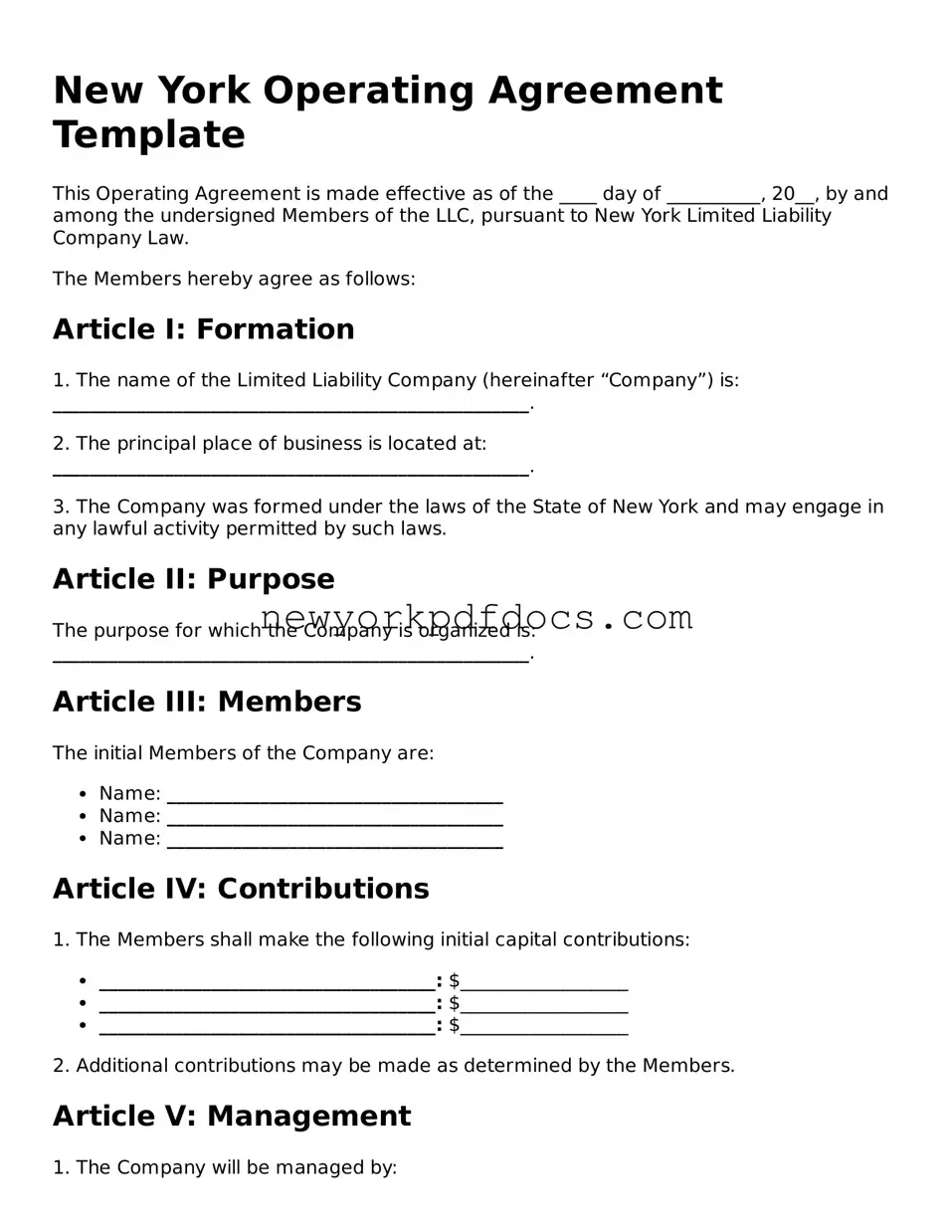New York Operating Agreement Template
This Operating Agreement is made effective as of the ____ day of __________, 20__, by and among the undersigned Members of the LLC, pursuant to New York Limited Liability Company Law.
The Members hereby agree as follows:
Article I: Formation
1. The name of the Limited Liability Company (hereinafter “Company”) is: ___________________________________________________.
2. The principal place of business is located at: ___________________________________________________.
3. The Company was formed under the laws of the State of New York and may engage in any lawful activity permitted by such laws.
Article II: Purpose
The purpose for which the Company is organized is: ___________________________________________________.
Article III: Members
The initial Members of the Company are:
- Name: ____________________________________
- Name: ____________________________________
- Name: ____________________________________
Article IV: Contributions
1. The Members shall make the following initial capital contributions:
- ____________________________________: $__________________
- ____________________________________: $__________________
- ____________________________________: $__________________
2. Additional contributions may be made as determined by the Members.
Article V: Management
1. The Company will be managed by:
- Members (Management by all Members)
- Designated Manager (Selected by Members)
2. The powers and duties of the Members/Manager include, but are not limited to:
- Managing the business operations.
- Holding meeting and keeping records.
- Entering into contracts on behalf of the Company.
Article VI: Distributions
1. Distributions of profits will be made to Members in proportion to their respective membership interests as follows:
- Name: ____________ %
- Name: ____________ %
- Name: ____________ %
Article VII: Amendment
This Operating Agreement can be modified or amended only by a written agreement signed by Members holding a majority of the membership interests.
Article VIII: Miscellaneous
This Agreement shall be governed and construed in accordance with the laws of the State of New York.
IN WITNESS WHEREOF, the Members have executed this Operating Agreement as of the day and year first above written.
Members:
_______________________________ (Signature) Date: _______________
_______________________________ (Signature) Date: _______________
_______________________________ (Signature) Date: _______________
